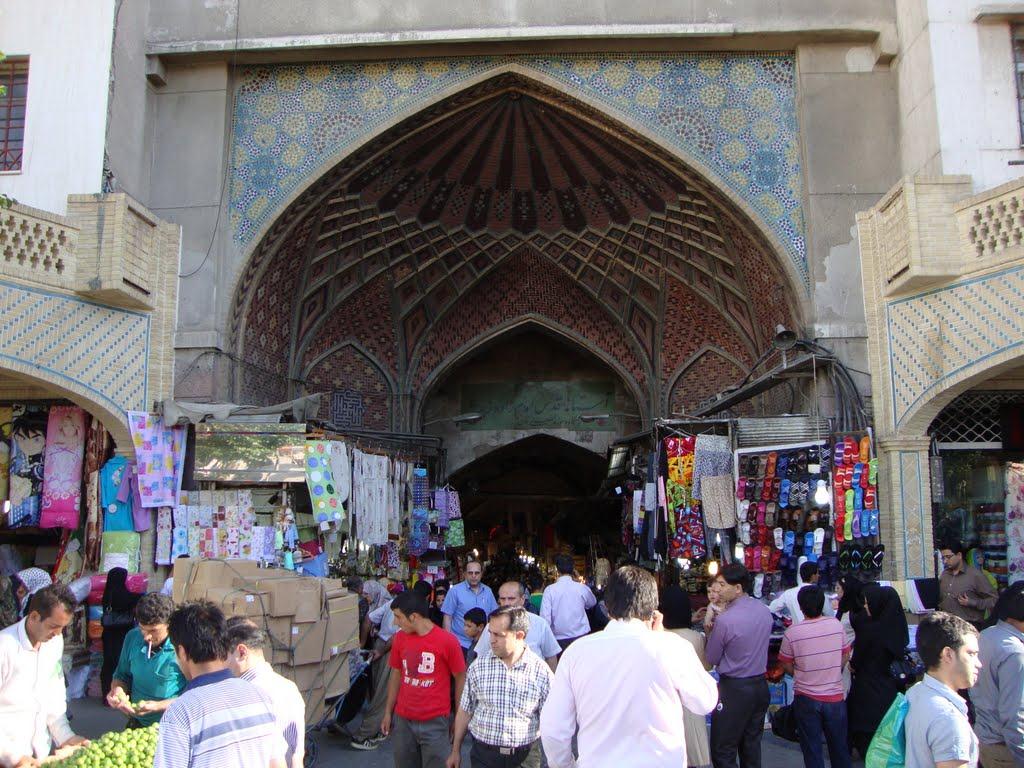Although restoration of the Grand Bazaar in downtown Tehran to enhance safety of the 114-hectare historical market began in mid-2015, it only gathered pace since the beginning of the new fiscal year on March 21.
Under the restoration project, priority has been given to 10 high-risk business spaces, known in Persian as ‘serai’.
A serai is a building used mainly for wholesale trade. It also includes warehouses and manufacturing units but no retailing.
Located at the Arg Square in southern Tehran, the Grand Bazaar is split into several labyrinthine corridors over 10 km, each specializing in different types of goods, including copper, carpets, paper, dry fruits, spices, and precious metals, as well as small traders selling all types of merchandise. Today, modern goods are available as well, in addition to the many traditional corridor items.
According to Behzad Ya’qoubi, a member of the Bazaar’s board of trustees, the 10 high-risk serais located in the eastern, western, southern and central parts of the bazaar need either total reconstruction or retrofitting, and therefore have been prioritized, Mehr News Agency reported.
The buildings were classified based on year of construction and safety conditions, the size of crowds commuting to and from the historical site, and the type of businesses conducted, he said.
The project faced delays due to the two-week Norouz holidays (March 20-April 2) and the security measures enforced by law enforcement for the tourists who flock to the capital city during the annual holiday season.
“In spite of the challenges, rapid progress was made with cooperation from related quarters and the work of several months was completed in three weeks,” Ya’qoubi claimed, adding that most of the restoration work is now being carried out at night.
Presently, around 60,000 trading units are doing business in 150 serais as well as 90 malls and other traditional trading areas.
He said it is not easy to pinpoint the extent of the restoration area as even the several newly-added building sections need safety enhancement.
The oldest remaining buildings, walls and passages in the bazaar today rarely exceed 400 years, with many being constructed or rebuilt in the last 200 years.
Much of the bazaar itself was constructed fairly recently with parts added in the last century. Critics say that less care was taken in the construction of the later sections. Projects to beautify the bazaar through the use of plaster moulding and decorative brickwork were undertaken late in the 20th century.
“It can be said that between 70% and 80% of the sites have to be renovated,” said Ya’qoubi.
The collapse of Tehran’s 17-storey Plasco building on January 19 this year after a huge blaze that caused the death of 20 people, including 16 firemen, has necessitated the need to speed up restoration of the bazaar.
Main Trading Center
The Plasco incident caused widespread concern about the safety of old commercial buildings in the capital including the Grand Bazaar, said to be the lifeblood of Iranian commerce, and prompted the relevant organizations to step in and contribute to increasing the safety of the area.
Extensive business activity along with the bazaar’s touristic attraction as a historical site brings a large number of people to the area daily and makes it all the more essential to ensure high safety norms.
“If all the relevant authorities collaborate, 30% to 40% of the restoration program will be completed before the next fiscal in March 2018,” he noted.
Installing fire alarm systems, removal of obstructions on common passageways to make way for emergency operations, preventing short circuits in electricity supply that can cause fires or explosions, and retrofitting the old buildings are among the projects under implementation.
“To accelerate the process, we need the cooperation of the authorities in issuing permits to clear illegal corridor blockage as well as electricity tapping,” he said.
He urged all relevant bodies to give particular attention to the Grand Bazaar this year stressing that “even an incident a hundred times smaller than Plasco” could devastate the historical site, the tour de force of the country’s market life.


